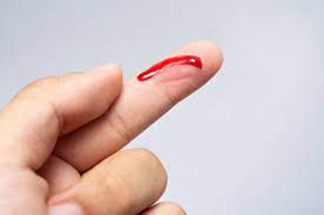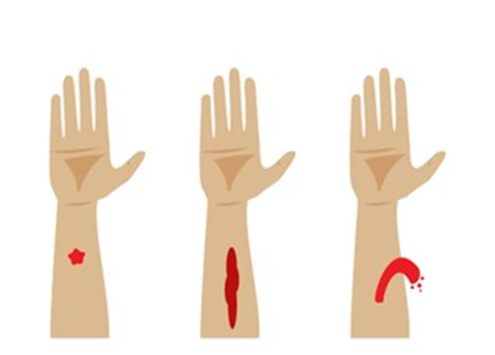#15 FIRST AID FOR BLEEDING
Bleeding is oozing of blood from the body due to damage of skin (open wound) or rupture of a blood vessel. Bleeding is of two types, based on the site of bleeding
- External bleeding
- Internal bleeding
EXTERNAL BLEEDING
When blood oozes out from an open wound where the damage to the skin visible, this kind of bleeding is said to be an external bleeding.
Based on the damage to the type
blood vessel bleeding is of 3 types
- Arterial bleeding (bright red
in color and spurts)
- Venous bleeding (dark red in
color and continuous bleeding (non-spurts))
- Capillary bleeding (color
somewhere between bright and dark red, and is very less in amount)
HOW TO TREAT EXTERNAL BLEEDING
For an open wound, first clean the wound from inside to out (i.e. clean the wound first then the surrounding tissue with hydrogen-peroxide if available, if not use sterile normal saline), apply direct pressure over the wound for a maximum for 15 minutes.
- If the bleeding doesn’t stop even after direct pressure, elevate the injured area. Also apply a construction bandage to further secure or to put pressure on the wound.
- Even after the administration of construction bandage if the wound bleed continuously, then apply a tourniquet to stop the bleeding.
INTERNAL BLEEDING
HOW TO TREAT INTERNAL BLEEDING
- Place the patient at total rest
- Assist the patient into the position of greatest comfort.
- Cover the patient with a blanket to maintain body heat.
- Place protective fabric underneath the patient if the surface is rough, cold or hot – e.g. a coat if the patient is lying on a road
- Apply cold wet cloth above the place where you suspect for internal bleeding or where you see the discoloration of the skin.
- Eliminate the cause for shock, in this case treat for bleeding.
- Elevate the foot end of the person
- Keep the person warm, cover him with blanket
- Give oral fluids if the person is conscious without major movement
- If the person is unconscious immediate intravenous fluid infusion is needed to treat the person
REFERENCES
- https://www.stjohn.org.nz
- https://mayoclinic.org
- The Washington Manual Of Emergency Medicine, South Asian Edition
- GK Pal, Book of Anatomy and Physiology
Prepared by,
Dept. of medicine,
Pondicherry Maritime Academy.






Comments
Post a Comment